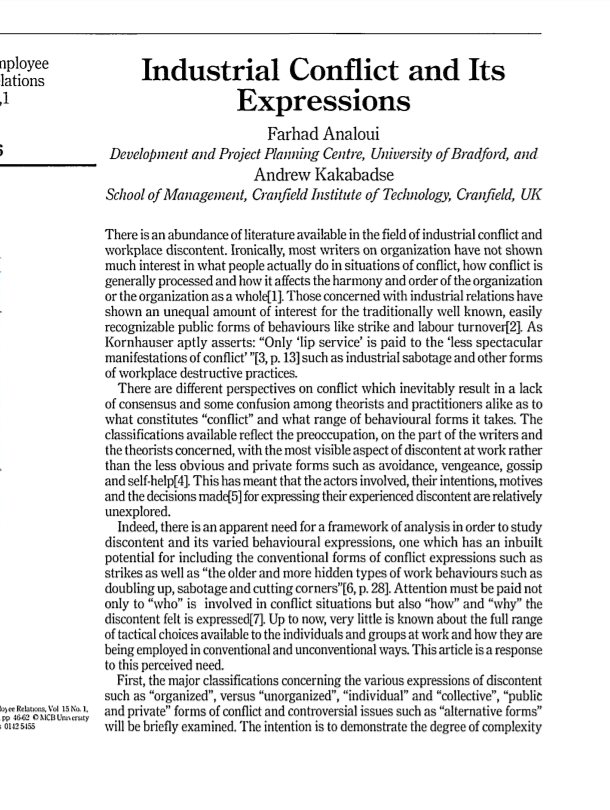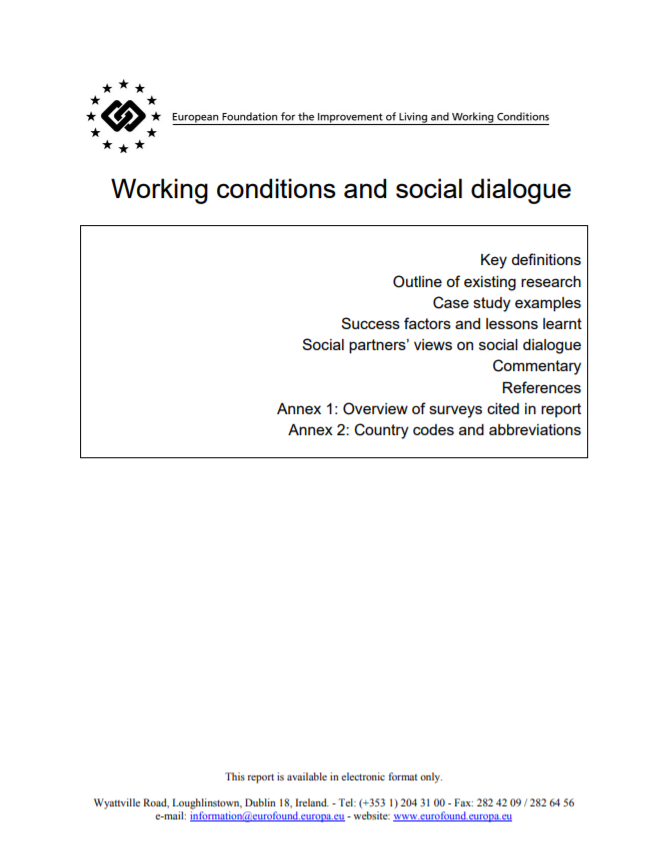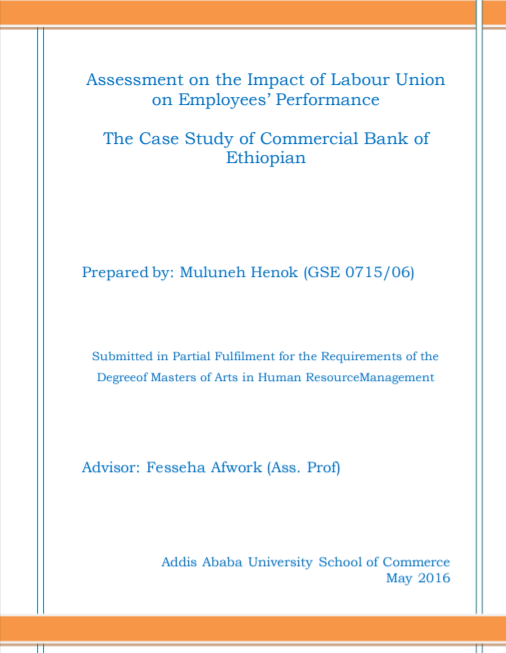
Abstract:
While it is widely recognized that conflict at work takes various forms, there is much confusion and disagreement among theorists and practitioners as to what constitutes conflict – discontent – and what range of behavioural form it takes. As for behavioural expressions of conflict, only the most visible forms such as strikes, labour turnover and absenteeism have received attention. Other unconventional forms of behaviour such as sabotage, pilferage and disruptive practices have, by and large, been neglected. At present, a comprehensive classification which includes both conventional and unconventional expressions of discontent is difficult to find. Includes a direct response to this vacuum. Offers a behavioural framework which has the potential for not only including the actors involved, but also explaining the behavioural strategies open to people and the reasons for choosing a particular way of expressing their discontent. Concludes that a better understanding of workplace conflict and its effective management requires appreciating the range of behavioural expressions involved; creation of the work environment conducive to the conflict processing and conflict resolution; and understanding the significance of the potential of the people as choice makers, when choosing from among the options open to them for expressing discontent.








